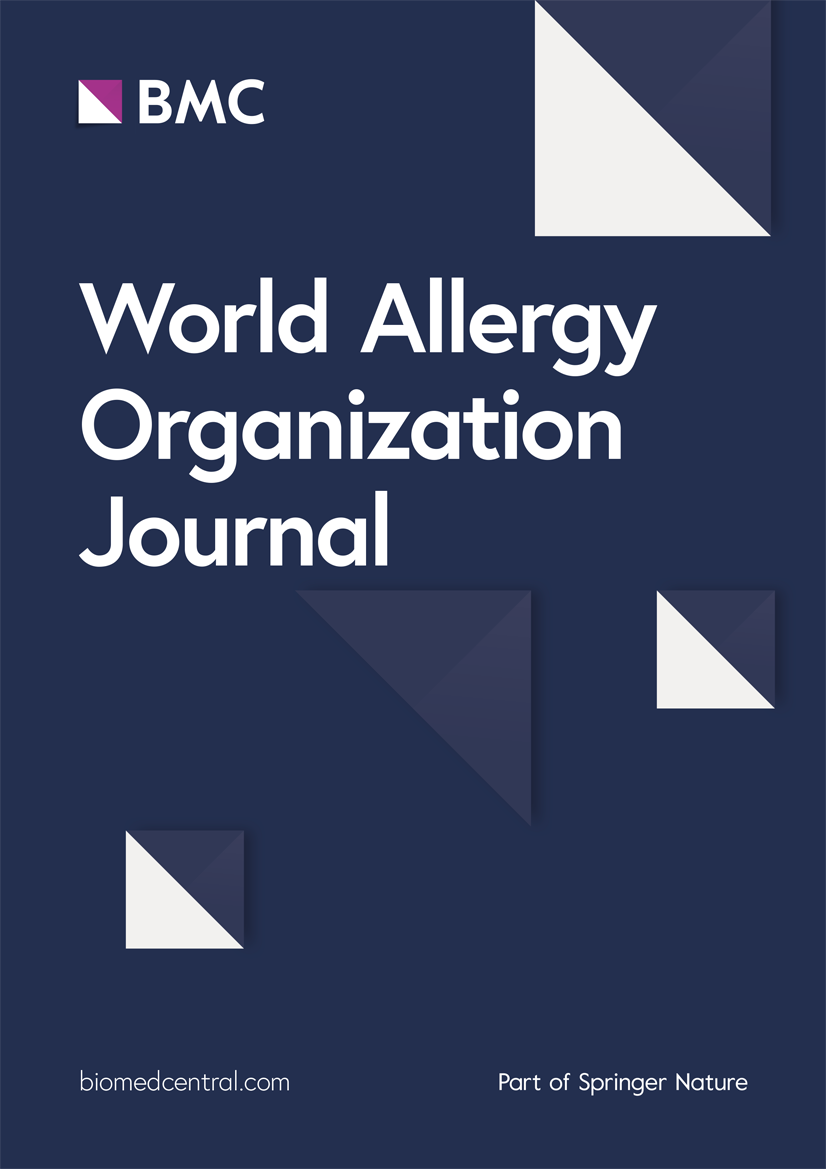Evaluation of Lactococcus lactis carrying active For t 2 protein in immunotherapy for Forcipomyia taiwana allergy in mice
IF 4.3
2区 医学
Q2 ALLERGY
引用次数: 0
Abstract
Background
Forcipomyia taiwana (Diptera: Ceratopogonidae) allergy is Taiwan's most prevalent biting insect allergy. Our previous studies identified and cloned major F. taiwana allergens For t 2 and determined its strong immunogenicity to human fibroblasts. This study investigated whether oral administration of food-grade Lactococcus lactis containing For t 2 ameliorated midge-allergic symptoms in a mouse model.
Methods
BALB/c mice, divided into viable, sonicated, and autoclaved groups, were fed with L. lactis-For t 2 5 times weekly for 4 weeks. Immune molecules related to allergies in serum were analyzed and 16S rRNA profiles of fecal samples were compared.
Results
The results revealed administration of L. lactis-For t 2 significantly decreased the level of total IgE and ameliorated midge allergen-challenge-induced scratch bouts found in the viable and sonicated groups, but not the autoclaved group. The sonicated group showed a significant reduction in IL-4, IL-13, IL-17, MCP-1, and TNF-α levels. Its effect was comparable to that of the viable group and was even more pronounced in reducing IL-9 expression. Further, we performed a comprehensive analysis of 16S rRNA profiles corresponding to fecal samples. Clostridiaceae and Clostridium were the dominant family and genus in the autoclaved group, whereas Duncaniella and Kineothrix were the dominant genus in the sonicated and viable groups, respectively.
Conclusions
The results imply that mucosal allergen-specific immunotherapy of L. lactis For t 2 is a better cost-effective alternative to conventional subcutaneous allergen-specific immunotherapy. This study shows that non-viable L. lactis-derived For t 2 active protein may be a promising therapeutic for treating midge allergy.
乳酸乳球菌携带活性蛋白2在免疫治疗小鼠Forcipomyia taiwan过敏中的作用
背景台湾蠓科(双翅目:蠓科)过敏是台湾最常见的咬虫过敏。我们先前的研究鉴定并克隆了台湾F. F. 2的主要过敏原,并确定其对人成纤维细胞具有较强的免疫原性。本研究探讨了在小鼠模型中口服含有For t2的食品级乳酸乳球菌是否能改善中度过敏症状。方法balb /c小鼠分为活鼠组、超声组和高压灭菌组,每周灌胃乳杆菌25次,连续灌胃4周。分析血清中与过敏相关的免疫分子,比较粪便样本的16S rRNA谱。结果乳杆菌- for 2可显著降低小鼠总IgE水平,改善超声组和活菌组的致敏性抓痕,而高压灭菌组无明显作用。超声治疗组IL-4、IL-13、IL-17、MCP-1、TNF-α水平显著降低。其效果与活菌组相当,在降低IL-9表达方面更为明显。此外,我们对粪便样本对应的16S rRNA谱进行了全面分析。高压灭菌组以梭菌科(Clostridiaceae)和梭菌属(Clostridium)为优势科和优势属,超声灭菌组和活菌组以Duncaniella和Kineothrix为优势属。结论乳杆菌的粘膜过敏原特异性免疫治疗是一种比常规皮下过敏原特异性免疫治疗更经济有效的方法。本研究表明,乳香乳杆菌衍生的非活的fort2活性蛋白可能是治疗蠓过敏的一种有前景的药物。
本文章由计算机程序翻译,如有差异,请以英文原文为准。
求助全文
约1分钟内获得全文
求助全文
来源期刊

World Allergy Organization Journal
Immunology and Microbiology-Immunology
CiteScore
9.10
自引率
5.90%
发文量
91
审稿时长
9 weeks
期刊介绍:
The official pubication of the World Allergy Organization, the World Allergy Organization Journal (WAOjournal) publishes original mechanistic, translational, and clinical research on the topics of allergy, asthma, anaphylaxis, and clincial immunology, as well as reviews, guidelines, and position papers that contribute to the improvement of patient care. WAOjournal publishes research on the growth of allergy prevalence within the scope of single countries, country comparisons, and practical global issues and regulations, or threats to the allergy specialty. The Journal invites the submissions of all authors interested in publishing on current global problems in allergy, asthma, anaphylaxis, and immunology. Of particular interest are the immunological consequences of climate change and the subsequent systematic transformations in food habits and their consequences for the allergy/immunology discipline.
 求助内容:
求助内容: 应助结果提醒方式:
应助结果提醒方式:


